|
photo page 41 |
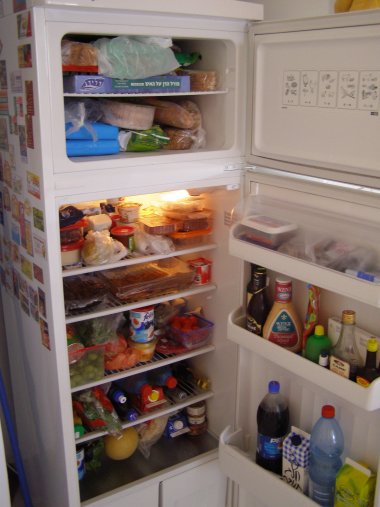
Three barbecues within a week from returning to Eilat. Hiske invites us for the first BBQ, and a few days later we organize our own on
the balcony. The fridge is almost bursting......
|
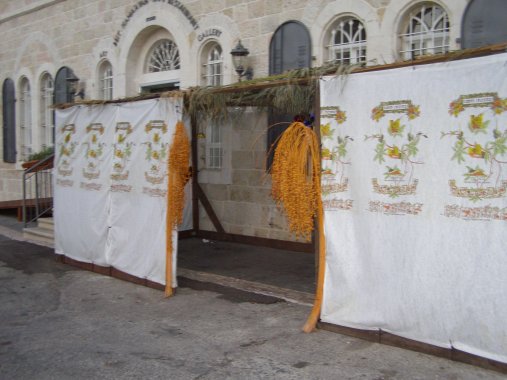
The third is at Miriam's place. Miriam is the receptionist at Coral Beach, who invites us to celebrate the start of Sukkot. This
feast commemorates the 40-year trek through the desert and maintains the awareness that one must always be able to relinquish richness and
security at the flip of a hat. Huts with roofs or leaves line the streets, hospitality is the word, and we hear laughter and singing all around. Miriam offers a grand BBQ
with lots of food for 8 adults and a bunch of kids. We talk till the wee hours with Miriam and her husband, and her son Sjimmy.
|
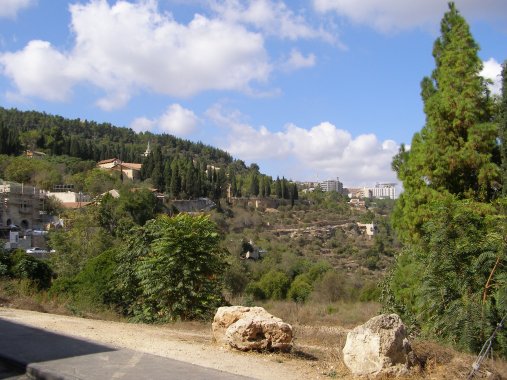
Sukkot lasts a week, and due to these holidays Ruth and Yuval can share a couple of days off work to make a trip north with us,
to a bungalow in Ein-Kerem that belongs to friends. It is situated on the west side of Mount Herzl. In the village is a well from
which Maria drank when she visited Elizabeth, mother of John the Baptist. Around that well, a number of churches and monasteries has
sprung up, turning Ein-Kerem into a destination for pilgrims.
|
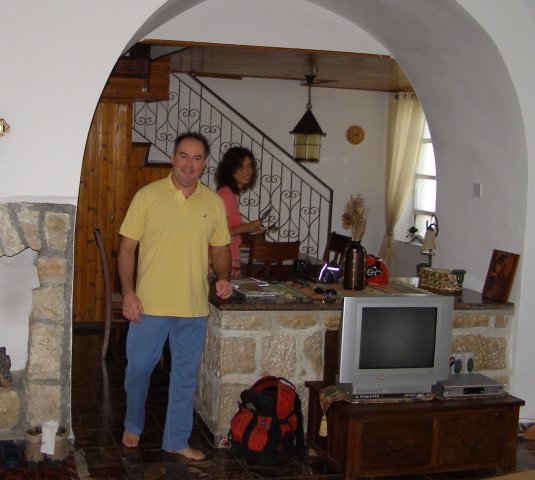
The house is built in original Arabic style, with massive walls and vaulted ceilings, and wonderfully furnished.
Nearby is the famous restaurant Pundak, where we are served by a waiter from Heinenoord in Holland. Small world after all.
|
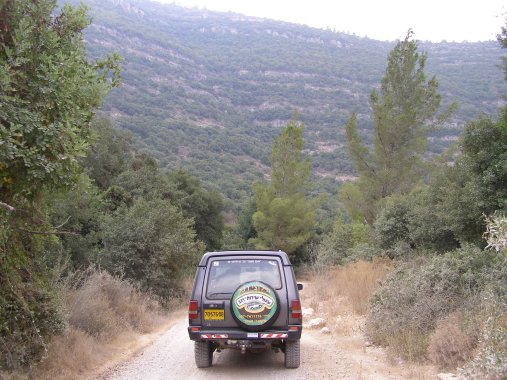
We make a jeep trip into the Judean hills, and soon exchange the hardtop for a dusty path with trees and bushes scraping the sides of
the car. The path follows the valley, and steep hills rise up on all sides.
|
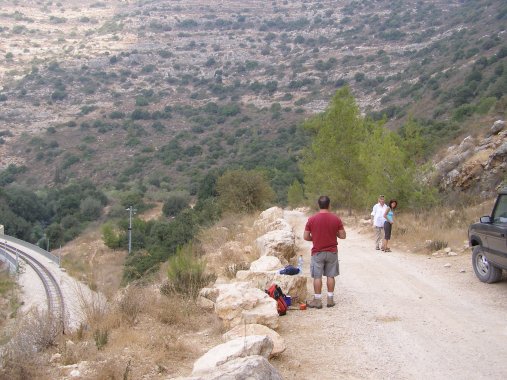
We drink sage tea with Shibolim cookies, next to a steep, 30 meters deep ravine. A brand new bridge carries railroad tracks over
a little river.
|
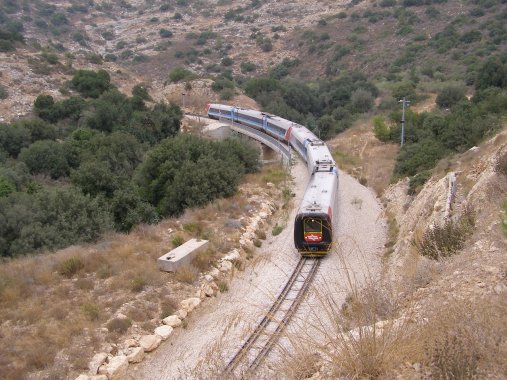
while drinking tea, the Tel-Aviv Jerusalem train passes right beneath us. The railroad has been reopened very recently, after years of
decay and disuse.
|
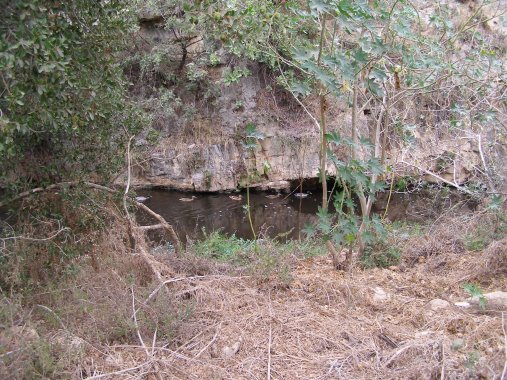
The valley is called Nahal Sorek, after the little river. This time of the year, the water consists mainly of treated Jerusalem sewage.
Swimming is prohibited, but these ducks have probably missed the sign.
|
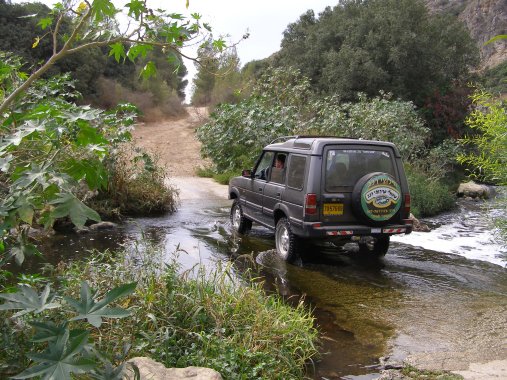
The jeep crosses a wading spot in the river. Quite a change from desert sand. |
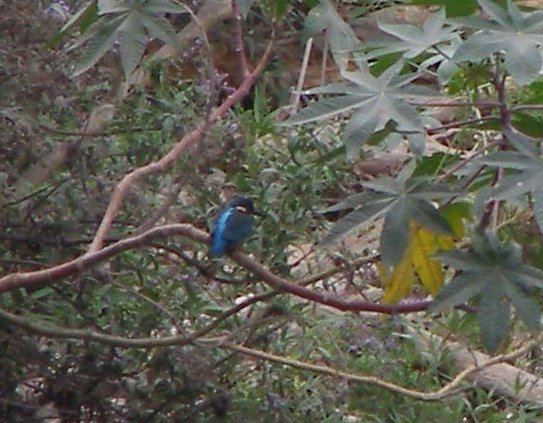
Sonja spots a Kingfisher on a branch, close to where we crossed. Apparently there is fish in this river, probably covering their noses
with their fins, as the water is suspicuously brown and foaming.....
|
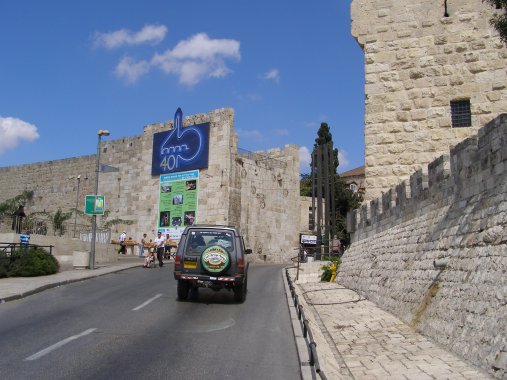
We visit Jerusalem. To our big surprise, Yuval drives the jeep through the Jaffa gate into the old city. A narrow road
just behind the walls lead to the Wailing Wall.
|
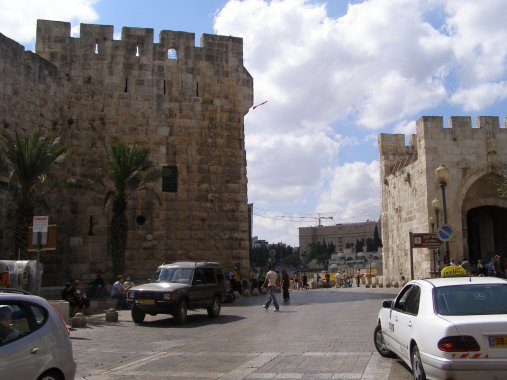
buying a bagel with Za'atar for Yuval, who is waiting at the entrance of the city.
|
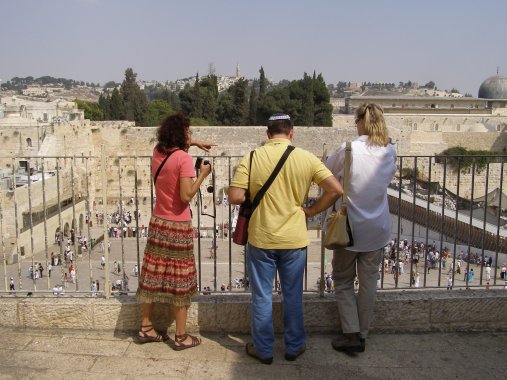
View at the Wailing Wall, with the Mugrabi gate visible just to Sonja's right. The excavations near this gate have drawn lots
of media attention in the last couple of years.
|
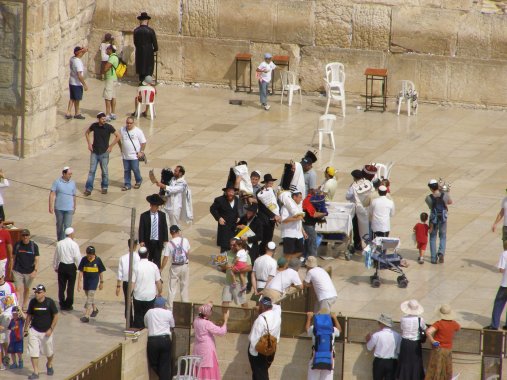
It is the last day of Sukkot, Simchat Torah, the day that the religious Jews celebrate the receival of the Torah. At the entrance
to the wall is a table with lots of Torahs, and everyone passing by is offered one to carry and dance around the table. Some streets
away, Chassidic Jews are having a wild party with loud singing and dancing.
|
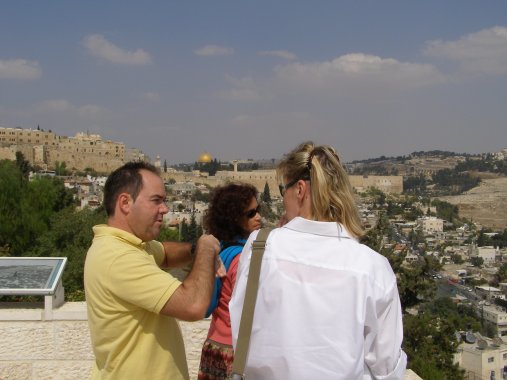
Outside the old city, we visit a panoramic view point that looks out over the city towards the Mount of Olives. Yuval explains
what is where, so that we get a much clearer picture of the city and its surroundings.
|
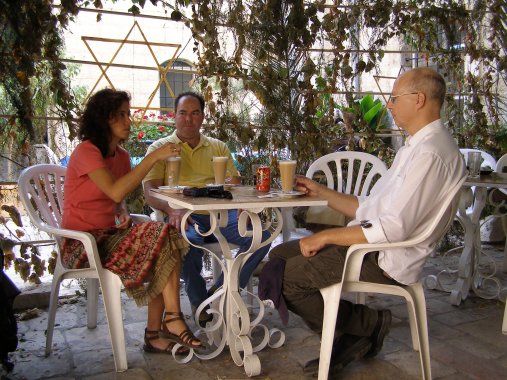
Topping up with Cafe Hafuch Kadol (big coffee latte).
|
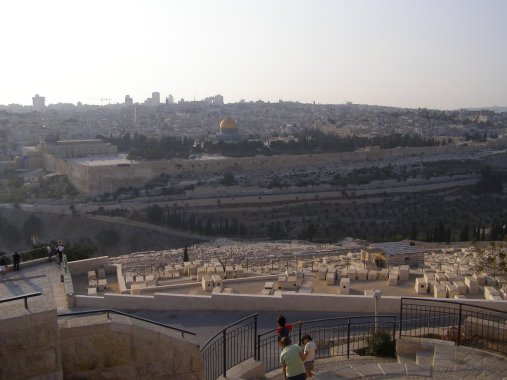
A brand new road and tunnel lead us around the old city into East Jerusalem, where traffic suddenly turns to chaos and moves at
snail pace along the Arabic markets and the Damascus gate, packed with people. After a while we reach the Mount of Olives where the
well known Jewish cemetery is. Part of the huge cemetery is visible in the foreground, but the most striking view from here is
the Temple mount.
The big gate in the center of the eastern wall (to the right hand side in the picture) is the Golden Gate. According to expectations,
the messiah will, upon return to this world, enter the city through this gate. To prevent this, the Muslims have barred the gate with
stones and cement, and situated a Muslim cemetery in front of the gate.
|
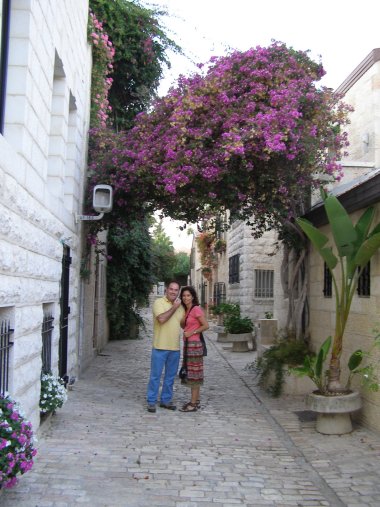
We finish the day with a walk on the other side of the city, in the neighborhoods of Yemin Moshe and Kfar David. Yemin Moshe was a
derelict area, and the house were offered to artists at symbolic prices. They have turned it into a beautiful and expensive area, with lots of
flowers and parks.
|
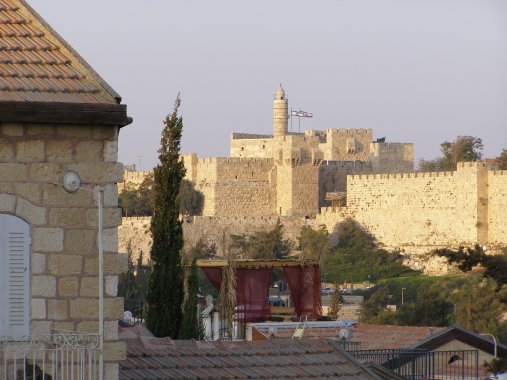
Our previous visit to Jerusalem, in 1994, saw Kfar David as a piece of waste land. Now it is a big and expensive neighborhood with
apartments costing millions of dollars, owned primarily by orthodox Americans. There is a stunning view at the old city walls and the
tower of David, coloring to gold in the sunset. Jerusalem of Gold!
This last evening of our holiday we have a splashing dinner at Foccacia (Henk and soy sauce are not a save combination ;-).
|
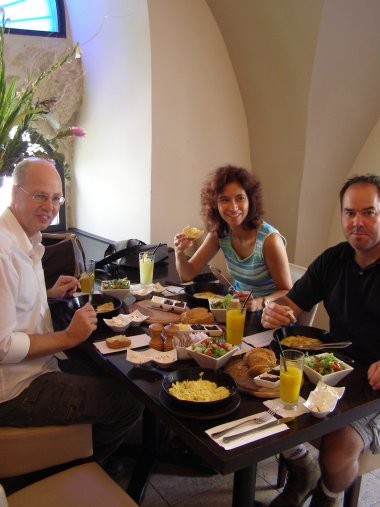
Israeli breakfast at a little restaurant in Ein Kerem, before driving back to Eilat via the Dead Sea and a short break in Massada.
This has been a very nice and instructive tiyul, that has given us a much better understanding of Jerusalem.
|



